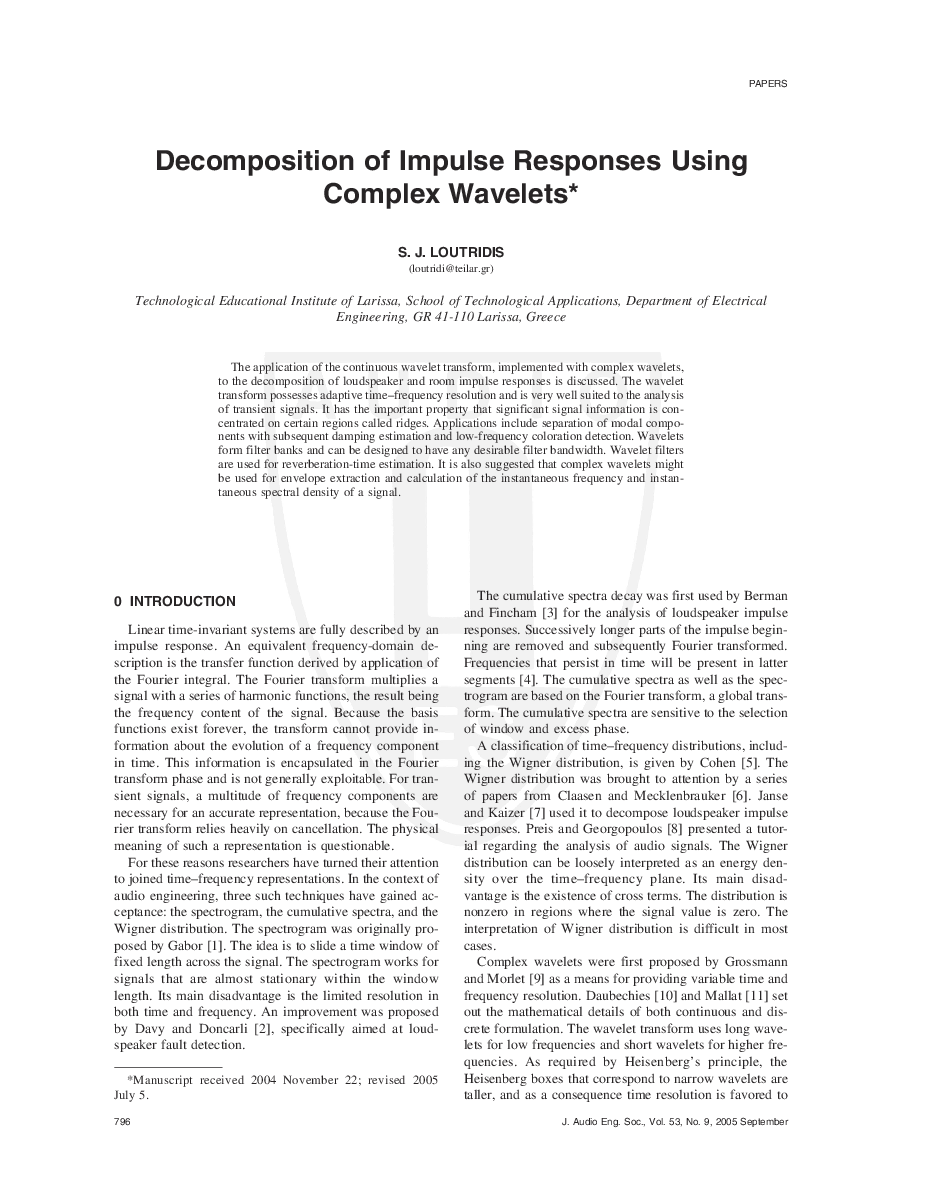Home / Publications / E-library page
You are currently logged in as an
Institutional Subscriber.
If you would like to logout,
please click on the button below.
Home / Publications / E-library page
Only AES members and Institutional Journal Subscribers can download
The application of the continuous wavelet transform, implemented with complex wavelets, to the decomposition of loudspeaker and room impulse responses is discussed. The wavelet transform possesses adaptive time–frequency resolution and is very well suited to the analysis of transient signals. It has the important property that significant signal information is concentrated on certain regions called ridges. Applications include separation of modal components with subsequent damping estimation and low-frequency coloration detection. Wavelets form filter banks and can be designed to have any desirable filter bandwidth. Wavelet filters are used for reverberation-time estimation. It is also suggested that complex wavelets might be used for envelope extraction and calculation of the instantaneous frequency and instantaneous spectral density of a signal.
Author (s): Loutridis, Spyros J.
Affiliation:
Technological Educational Institute of Larissa, Larissa, Greece
(See document for exact affiliation information.)
Publication Date:
2005-09-06
Import into BibTeX
Permalink: https://aes2.org/publications/elibrary-page/?id=13434
(538KB)
Click to purchase paper as a non-member or login as an AES member. If your company or school subscribes to the E-Library then switch to the institutional version. If you are not an AES member Join the AES. If you need to check your member status, login to the Member Portal.

Loutridis, Spyros J.; 2005; Decomposition of Impulse Responses Using Complex Wavelets [PDF]; Technological Educational Institute of Larissa, Larissa, Greece; Paper ; Available from: https://aes2.org/publications/elibrary-page/?id=13434
Loutridis, Spyros J.; Decomposition of Impulse Responses Using Complex Wavelets [PDF]; Technological Educational Institute of Larissa, Larissa, Greece; Paper ; 2005 Available: https://aes2.org/publications/elibrary-page/?id=13434